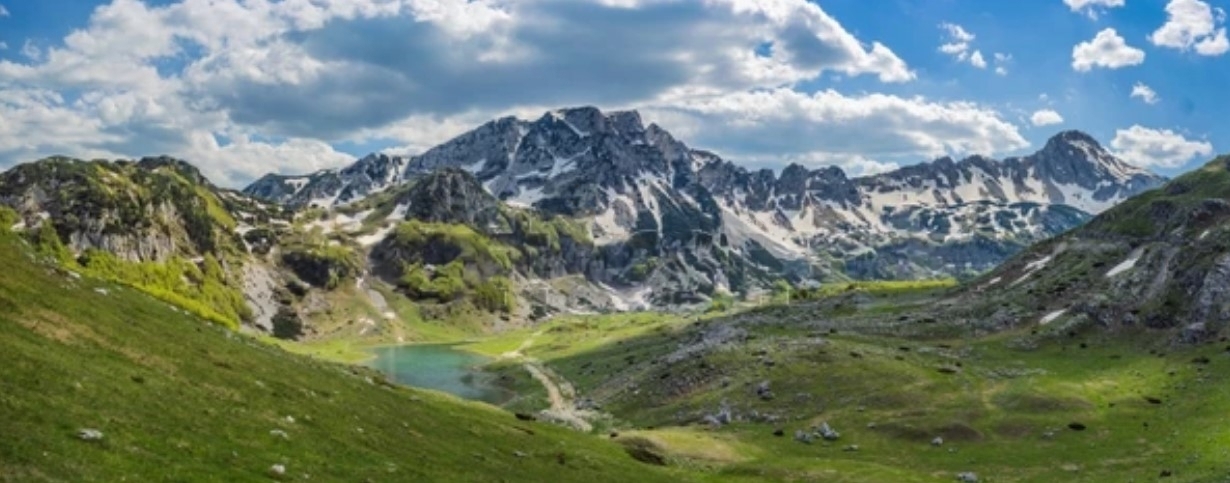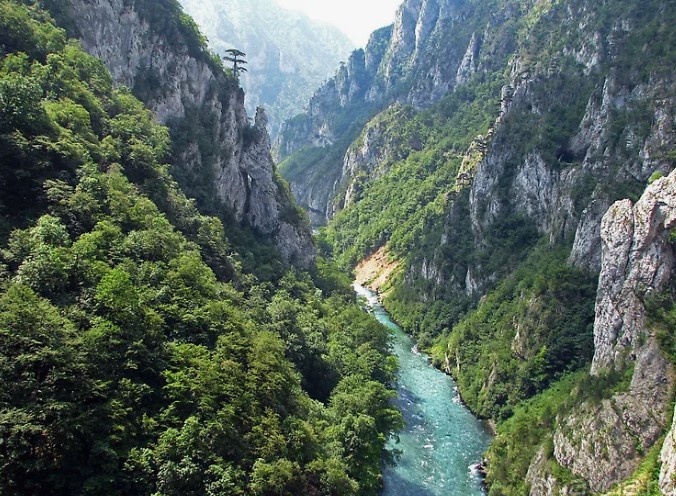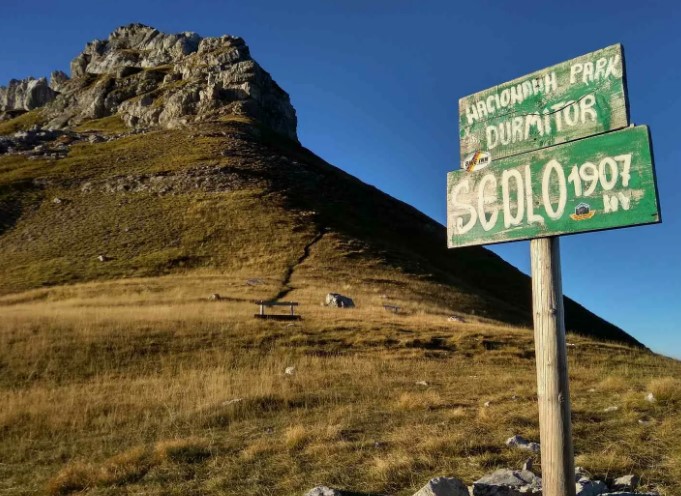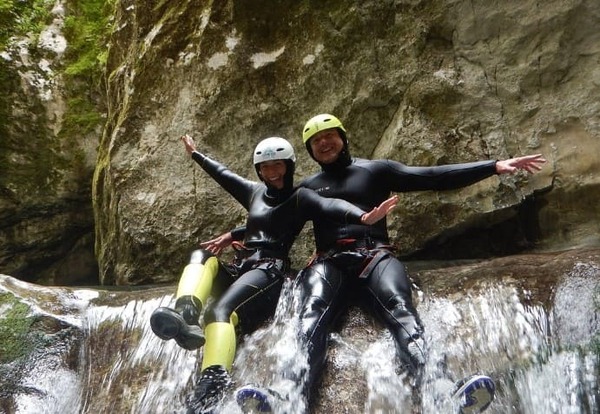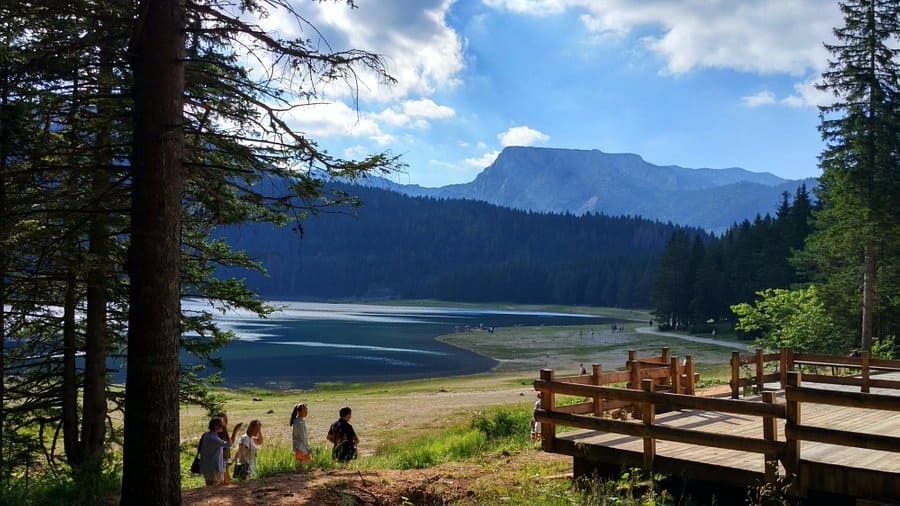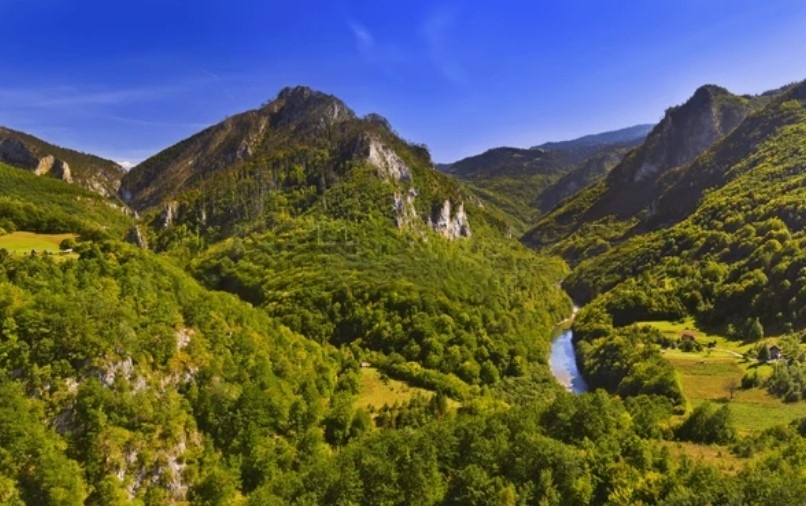Montenegro is a land of cliffs, pine forests, and rivers, where nature remains truly wild and untamed. One of the most thrilling ways to experience its spirit is by rafting down the turbulent Tara River, which flows through Europe's deepest canyon. Rafting here isn't just a sport - it's a genuine adventure that leaves an indelible impression even on the most seasoned travelers. Book rafting from 70 euro per adult.
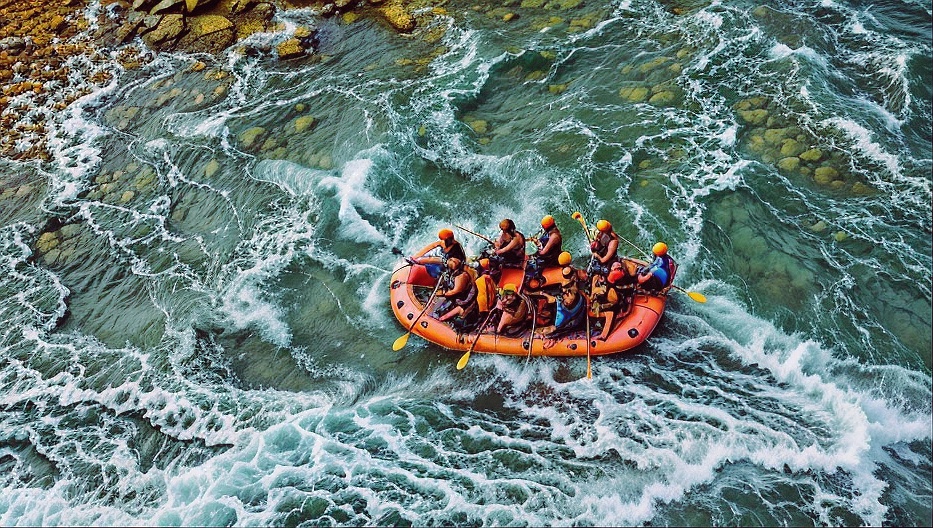
The Tara River: The Balkan Grand Canyon
The Tara River originates in the mountains of northern Montenegro and cuts through Durmitor National Park, forming a canyon up to 1,300 meters deep. This canyon is a UNESCO World Heritage site, and the river itself is considered one of the cleanest in Europe. The water is turquoise, crystal clear, and literally drinkable. Locals proudly tell visitors they drink directly from the river, and travelers can enjoy this same luxury.

The Tara River stretches approximately 140 kilometers, with 82 kilometers flowing through Montenegro. The total elevation drop reaches 1,300 meters, creating ideal conditions for rapids of varying difficulty. The Tara Canyon rightfully bears the name "Balkan Grand Canyon" – in scale, it's second only to its American counterpart, but surpasses it in depth.
The Rich Natural Heritage of Tara Canyon
The ecosystem of the Tara Canyon represents a unique combination of diverse natural zones. Over 1,300 plant species grow here, many of which are endemic. During spring and summer, the canyon slopes are covered with vibrant flowers, creating an extraordinary palette of colors.
The canyon's fauna is equally rich and diverse. The pristine waters of the Tara are home to 40 fish species, including the rare marble trout. In the forests surrounding the canyon, you might encounter bears, wolves, lynx, and other wildlife. For birdwatchers, the Tara Canyon is a paradise: more than 130 bird species nest here.
History and Cultural Significance
For centuries, the Tara River has played an important role in the region's history. During the Middle Ages, it was part of vital trade routes connecting the inner Balkans with the Adriatic coast. Along the river, remnants of ancient settlements and fortresses stand as testimony to the rich history of the area.
For locals, the Tara holds a special, almost sacred significance. Numerous legends and tales are associated with the river. One legend claims that on particularly quiet nights, you can hear the whispers of river spirits telling stories of days long past.
What to Expect on the Route
Rafting takes place on sections with rapids of varying difficulty levels: from moderate ones suitable for beginners to rapid and technical ones that challenge even experienced rafters. Spring brings powerful currents after the snow melts. Summer offers warm sunshine, slightly calmer waters, and amazing visibility through the crystal-clear water.

Along the way – steep cliffs, waterfalls, pine forests, caves, and bridges. There are stops for swimming, taking photos, and simply breathing in the fresh mountain air. Sometimes, you might camp overnight on a wild riverbank under the stars.
Main Routes
Short Route (12-15 km):
Ideal for beginners and families with children. Usually starts at Brstanovica and ends at Šćepan Polje. Takes about 2-3 hours, includes several easy rapids, and scenic swimming spots. This route is accessible even for children from 8 years of age when accompanied by adults.
Medium Route (18-25 km):
Starts from Đurđevića Tara Bridge and passes through several sections with Class II-III rapids. The rafting duration is 4-5 hours. This route offers an excellent balance between excitement and the opportunity to enjoy the surrounding nature.

Book your unforgettable rafting experience on the Tara River — feel the adrenaline, immerse yourself in wild nature, and make memories that will last a lifetime.
Half of a day - €70/person. Full day + lunch - €150.
Seasonal Route Characteristics
-
Spring Rafting (May–June):
During this time of year, the Tara is especially full due to melting mountain snow. The current is strong, the rapids are powerful, and the adrenaline level is at its maximum. The water temperature during this period is around 50–54°F (10–12°C), so wetsuits are necessary. Recommended for experienced rafters.
-
Summer Rafting (July–August):
The most popular time for rafting. Water temperature rises to 59–64°F (15–18°C), making the experience more comfortable. The water level drops slightly, softening some rapids and making routes accessible to beginners. On hot days, swimming in the cool waters of the Tara becomes a real pleasure.
-
Autumn Rafting (September):
A particularly picturesque time of year. The forests surrounding the canyon are painted in golden and red hues. The river current becomes calmer, allowing more time for photography and enjoying the landscapes. The water temperature gradually decreases, so wetsuits become necessary again.
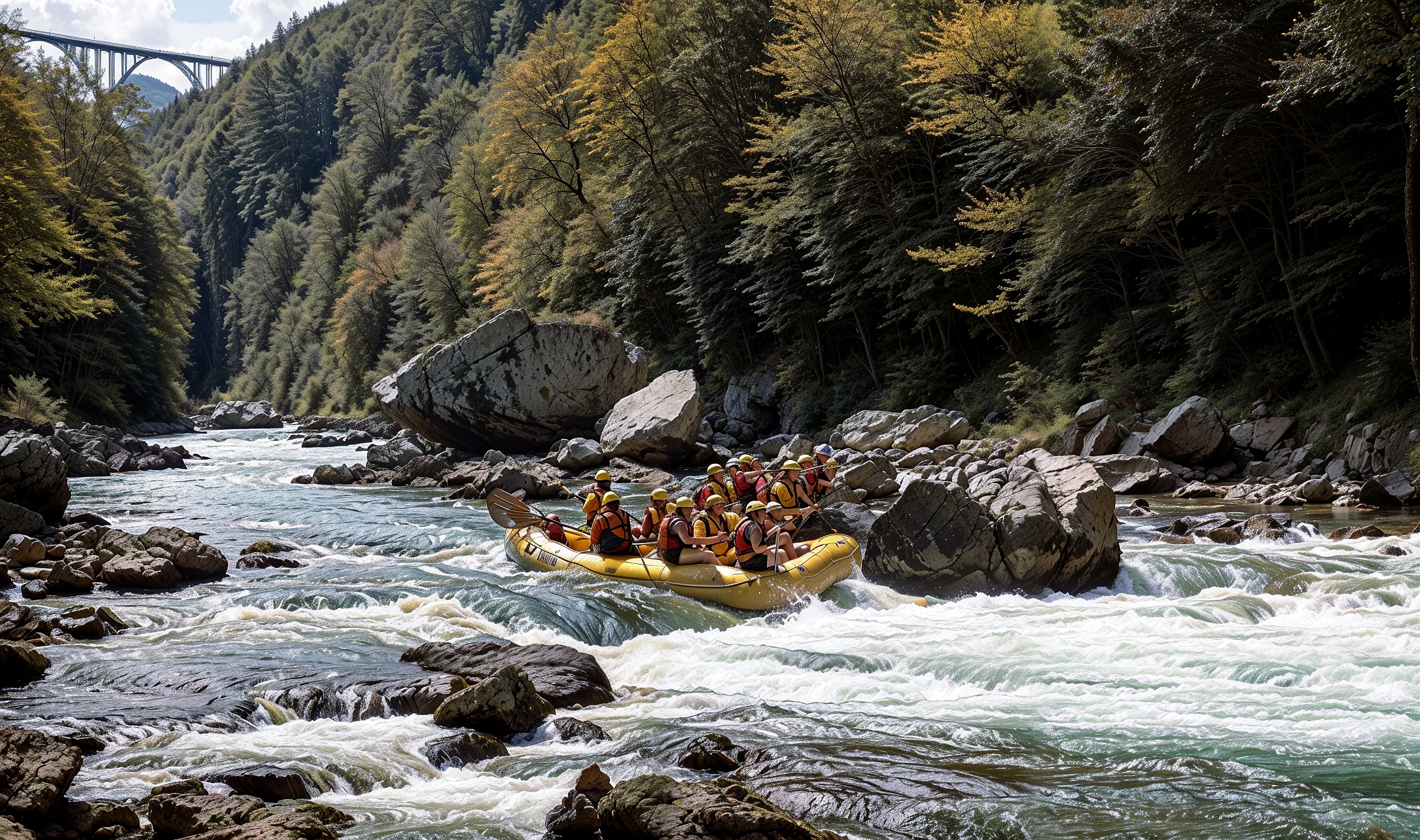
Safety and Guidance
- Experienced instructors, certified in water rescue, work on all routes. Before starting, detailed instruction is provided, during which participants learn the necessary skills for raft control and emergency procedures.
- Tourists are provided with all necessary equipment: helmets, life jackets, wetsuits, and waterproof bags for personal items. Most operators also provide neoprene socks and gloves, which are especially important in cooler weather.
- Even if you've never held a paddle before, you'll be taught and prepared. Instructors explain in detail the paddling technique, commands, and rules of behavior on the water. Each raft has a professional guide who monitors the situation and ensures the group's safety.
Safety Measures
Medical Support: Many companies ensure the presence of a medical professional on the shore or in the support group. Evacuation plans are developed for emergency situations.
Insurance: Most operators include accident insurance in the tour price. However, it's recommended to additionally obtain travel insurance covering extreme sports.
Communication and Coordination: Groups maintain contact with the base using radios or satellite phones. On popular routes, checkpoints are organized where help can be obtained if necessary.
Best Time for Rafting
The rafting season in Montenegro begins in May and lasts until the end of September. Each period has its own characteristics:
- May-June: Powerful currents, maximum thrill. Ideal for experienced rafters seeking adrenaline and challenging rapids. The air temperature during this time ranges from 64-77°F (18-25°C), while the water is still quite cold.
- July-August: Warmer water, gentler currents – perfect for beginners and families. Air temperature reaches 86-95°F (30-35°C), making rafting an excellent way to cool off on a hot day. The number of tourists is at its peak, so it's recommended to book tours in advance.
- September: A calmer but picturesque season – especially good for photography and nature appreciation. The air temperature gradually drops to 68-77°F (20-25°C), and the forests begin to change color. The flow of tourists decreases, allowing you to enjoy the beauty of the canyon in a more peaceful atmosphere.
Preparing for Rafting
What to Bring
Even if organizers provide all necessary equipment, there's a list of items recommended to bring with you:
- Swimwear (worn under the wetsuit)
- Towel and change of clothes
- Sunscreen (even on cloudy days)
- Sunglasses with a strap
- Waterproof case for camera or smartphone
- Plastic bottle with drinking water
- Light snacks (energy bars, fruits)
- Small amount of cash for unexpected expenses
Physical Preparation
No special physical training is required for rafting on the Tara River, especially if you choose beginner or intermediate routes. However, a certain level of endurance and the ability to swim are mandatory requirements.
For a more comfortable experience, it's recommended to:
- Strengthen back and arm muscles before the trip
- Improve overall endurance through cardio workouts
- Learn basic swimming skills if they're absent
Organizing a Rafting Tour
Choosing an Operator
Many companies in Montenegro offer rafting tours on the Tara River. When choosing an operator, it's recommended to pay attention to the following criteria:
- Experience in the market and company reputation
- Availability of certified instructors
- Condition of provided equipment
- Reviews from previous clients
- Included services (transfer, meals, insurance)
- Cost and cancellation/rebooking policies
Cost and Included Services
Prices for rafting tours vary depending on the season, route duration, and included services. On average, a one-day tour costs from €70 to €150 per person. This price usually includes:
- Transfer from Zabljak city center
- Equipment rental (raft, paddles, helmets, life jackets, wetsuits)
- Professional instructor services
- Meals (lunch if rafting is for a full day)
- Basic insurance
- Photo shooting of the route (in some companies)
Multi-day tours with overnight stays in campsites or riverside hotels cost from €150 per person and include additional services such as accommodation, three meals a day, and entertainment programs.
Why It's Worth Trying
Rafting in Montenegro isn't just about extreme sports. It's an opportunity to see the country differently, to feel the scale of nature, to disconnect from the hustle and bustle, and simply be "here and now." Even one day on the river gives you the feeling as if you've lived a little lifetime.
Ecological Aspect
Rafting tours in Montenegro are organized in accordance with principles of environmental responsibility. Many operators actively participate in programs to preserve the nature of the Tara Canyon and river. By participating in such a tour, you not only get unforgettable impressions but also contribute to protecting a unique ecosystem.
Cultural Experience
Rafting tours often include an introduction to local culture and cuisine. At campsites and rafting centers, traditional Montenegrin dishes prepared over an open fire are offered: kajmak (homemade cheese), pršut (cured ham), roštilj (grilled meat), and rakija (fruit brandy).
During stops, you can chat with locals, learn about their traditions and way of life. This provides an opportunity to understand the soul of Montenegro and its people more deeply.
Psychological Effect
Rafting is not only a physical activity but also a serious psychological practice. Overcoming rapids, teamwork, the need to make quick decisions – all this helps develop important skills that will be useful in everyday life:
- Ability to cope with stressful situations
- Capacity to work in a team
- Quick reaction and decision-making
- Trust in partners and instructors
- Overcoming your own fears and limitations
Conclusion
Rafting down the Tara River in Montenegro is much more than just an extreme adventure. It's a journey through one of the most picturesque corners of Europe, an opportunity to touch pristine nature and test yourself.
The Tara Canyon, formed over millions of years, holds amazing beauty and secrets. Rafting allows you to see them from a unique perspective – being in the very heart of this natural wonder. Turquoise water, steep cliffs, forested slopes, waterfalls, and caves – all this creates the feeling of traveling to another world.
If you're looking for a real adventure that will stay in your memory for a lifetime – rafting in Montenegro should be on your must-visit list. Here, on the turbulent waters of the Tara River, you'll find what is so often lacking in modern life – a sense of freedom, unity with nature, and genuine emotions not mediated by device screens.
As locals say: "Those who haven't rafted down the Tara haven't seen the real Montenegro." And it's hard to disagree with that.
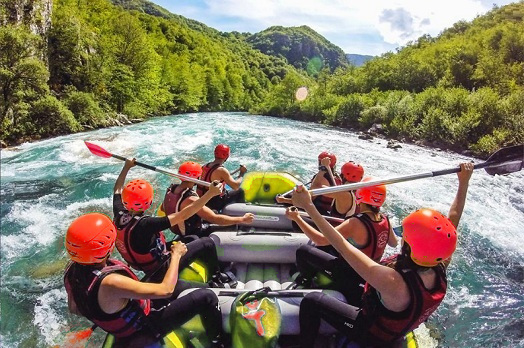
Book an unforgettable adventure on the Tara River — crystal-clear waters, breathtaking canyons, and pure adrenaline await you in Montenegro’s mountain paradise.



